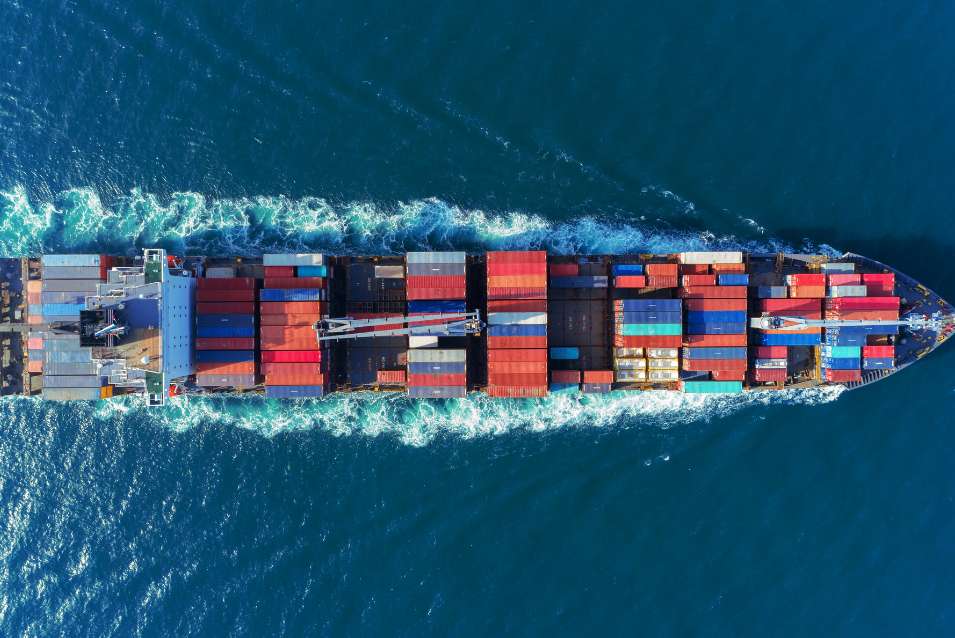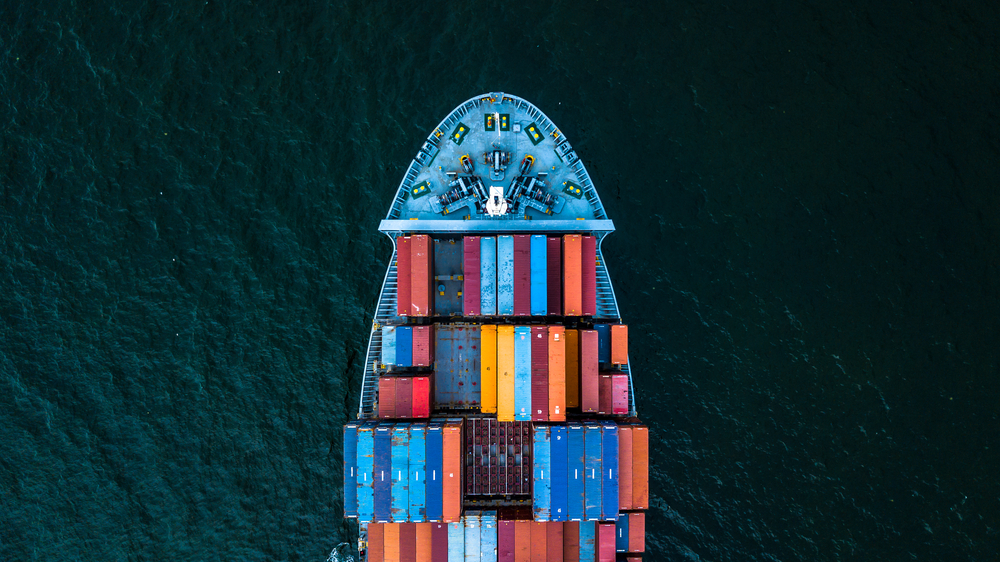The upheaval caused by the COVID-19 pandemic affected the entire process of global production and shipping. It exposed shortcomings in traditional methods, prompting businesses to embark on a journey of improvement. After moving past the most challenging phase of the pandemic, companies have found themselves at a critical juncture—exploring inventive strategies to navigate the evolving dynamics of global shipping services.

Problems Exposed by the Pandemic
As the whole world faced unexpected obstacles, we began to notice the weaknesses in our traditional ways. The biggest challenges that the global shipping service faced during the pandemic were:
1. Disruptions in Manufacturing
The first significant challenge stemmed from widespread disruptions in manufacturing, triggered by lockdowns and restrictions around the world. As governments aimed to curb the spread of the virus, factories faced forced closures, bringing production lines to an abrupt halt, and this unprecedented standstill spread across industries.
2. Logistical Challenges
Ports, crucial stops for shipping, at times had to close, causing delays. Air freight, the usual fast track for goods, faced restrictions, slowing down deliveries. This impacted import as well as export of all items. As a result, businesses across the globe faced delays, in need of innovative solutions for the global shipping program.
3. Inventory Shortages
In the realm of inventory management, just-in-time practices, designed for precision, faced severe disruptions. Consequently, companies experienced shortages of essential goods when faced with sudden spikes in demand. For businesses heavily reliant on lean inventory models, the stark reality emerged—they were ill-prepared for the unpredictability of a rapidly changing market.
4. Labor Shortages and Safety Concerns
As the pandemic unfolded, it swept through the workforce, causing labor shortages. Workers fell ill, faced mandatory quarantines and restrictions of their movement. The consequence was a shortage of hands-on-deck, disrupting the usual rhythm of business operations.
5. Increased Costs
A pivotal factor contributing to the increased financial strain was the need for alternative sourcing. Disruptions in the usual supply chain prompted businesses to explore new avenues. As companies sought to prioritize worker safety, additional measures were implemented, further elevating the price tag of operations. This quest for alternative sources, though necessary for resilience, introduced a layer of complexity and, inevitably, additional expenses.

Strategic Responses to the Challenges of Global Shipping
Embracing the need for adaptability, global supply chains in a post-pandemic world have come up with numerous strategies to help them become more efficient and resilient:
1. Diversification of Suppliers
In the relentless pursuit of an adaptable supply chain, businesses are increasingly recognizing the strategic importance of diversifying their supplier networks. This transformative approach involves breaking away from a reliance on a single source and strategically identifying alternative suppliers across different regions.
By weaving a network of diverse suppliers, companies aim to enhance their resilience to unforeseen disruptions, such as those experienced during the pandemic. This strategic shift introduces agility into the supply chain, enabling businesses to navigate uncertainties and fluctuations in global markets with greater ease.
2. Digitalization and Automation
Businesses are undergoing a profound transformation through the adoption of digitalization and automation in their supply chain management. This strategic evolution involves the integration of advanced technologies, including robotics, artificial intelligence, and data analytics. By leveraging these tools, companies aim to streamline operations, enhance visibility, and foster adaptability in the ever-changing realm of global shipping.
This shift toward a digitally-driven supply chain elevates operational efficiency and positions businesses to proactively respond to disruptions, ultimately reshaping the future of global logistics through a lens of technological advancement and innovation.
3. Resilient Supply Chain Planning
Resilient supply chain planning emerged as a strategic shield against disruptions, encompassing a multifaceted approach to effectively navigate uncertainties. This involves comprehensive scenario planning, meticulous risk assessments, and the development of contingency plans tailored to handle unexpected twists in the global international shipping. The essence of resilient supply chain planning lies in its proactive nature—anticipating potential hurdles and crafting adaptive strategies to ensure continuity.
Companies embracing this strategic paradigm are set to thrive in the face of evolving global dynamics. The commitment to resilient supply chain planning signifies a forward-looking approach, ensuring that businesses are well-prepared to navigate the unpredictable terrain of international trade with strategic foresight and adaptability.
4. Nearshoring and Onshoring
Businesses are actively exploring the benefits of nearshoring and onshoring to redefine the geographical proximity of their production hubs. Nearshoring involves establishing manufacturing facilities closer to the end markets, often within the same region or continent. Onshoring, on the other hand, brings production operations back to the home country. Both approaches are gaining prominence as businesses reassess the vulnerabilities associated with long-distance logistics and seek to reduce lead times.
Reduced transportation costs, enhanced supply chain agility, and increased control over production quality are some of the notable benefits. The geographic proximity allows for quicker response times to market fluctuations and ensures a more direct oversight of manufacturing processes.
5. Enhanced Visibility with IoT
The integration of the Internet of Things (IoT) is ushering in a transformative era in supply chain management, where visibility is not just a goal but a dynamic reality. Enhanced visibility with IoT involves deploying smart devices and sensors throughout the supply chain, providing real-time insights into the movement, condition, and location of goods. This continuous flow of data allows businesses to monitor and analyze every facet of their supply chain, from manufacturing to global shipping tracking, with unprecedented precision.
Imagine goods transmitting real-time updates about their status, whether in transit, at a warehouse, or on the retail shelf. This level of visibility empowers businesses to proactively identify and address potential issues, reducing the impact of disruptions. For instance, temperature-sensitive products can be monitored for compliance with storage conditions, ensuring the quality and safety of the goods throughout the journey.
6. Strategic Inventory Management
Strategic inventory management involves reevaluating how goods are stocked, introducing buffer stock and safety stock to create a quick and adaptable system. This allows businesses to proactively respond to unexpected shifts in demand or disruptions in the supply chain. Buffer stock is designed to lessen the impact of unforeseen events, ensuring a smoother and more resilient supply chain operation.
By embracing strategic inventory management practices, businesses position themselves to meet immediate needs, as well as anticipate and prepare for the ever-evolving landscapes of international commerce.
7. Investment in Sustainable Practices
As the world embraces a heightened awareness of environmental responsibility, businesses are recognizing the need to invest in sustainable practices within their supply chains. This shift involves aligning operations with environmentally conscious principles and social responsibility. By integrating sustainable practices, companies contribute to the global movement for a greener planet and fortify the resilience of their supply chains.
Businesses are exploring eco-friendly sourcing, reducing carbon footprints in logistics, and adopting renewable energy solutions. This investment in sustainability is not merely a moral obligation but a strategic move, fostering a supply chain that can weather the challenges of a changing world.
8. Collaborative Partnerships
Businesses have also recognized the power of collaborative partnerships as a cornerstone for resilient supply chains. This shift involves forging robust connections with suppliers, logistics providers, and other stakeholders, transcending traditional transactional relationships.
Collaborative partnerships foster better communication, coordination, and a shared commitment to addressing challenges collectively. Businesses are actively engaging in open dialogue with partners, sharing insights, and jointly strategizing to navigate the complexities of the global supply chain.
9. Cross-Training Workforce Skills
Cross-training workforce skills involve nurturing a versatile workforce, proficient in seamlessly adapting to a spectrum of roles within the supply chain. Cross-training ensures employees are specialists in their designated areas, but also adept in other aspects of the supply chain process.
This versatility becomes a powerful asset when confronted with unforeseen challenges, such as labor shortages, disruptions, or rapidly changing market demands. By cross-training workforce skills, businesses reinforce their resilience, shaping a workforce capable of quick responses to evolving needs.
10. Dynamic Pricing Strategies
Implementation of dynamic pricing strategies serves as a navigational tool amid market fluidity. This approach involves adjusting prices in real-time based on dynamic factors such as market demand, changing economic conditions, and fluctuations in transportation costs.
Dynamic pricing allows companies to fine-tune their pricing structures to align with the ebb and flow of supply and demand, ensuring a quick response to evolving market conditions. This strategic flexibility allows companies to optimize revenue and puts them in a position to make informed decisions in a rapidly changing economic environment.
11. Investment in Advanced Analytics
In today’s world of data-driven decision-making, businesses are making strategic investments to utilize the power of sophisticated tools and predictive modeling to analyze vast datasets, enabling companies to foresee market trends, anticipate demand fluctuations, and proactively navigate potential disruptions.
Advanced analytics provide actionable insights, empowering companies to make informed decisions with a heightened understanding of the intricacies influencing their supply chain dynamics. By embracing advanced analytics, businesses are optimizing their operations and positioning themselves as skillful professionals in the economic landscape.
12. Customs Compliance and Trade Regulations Expertise
Businesses are recognizing the importance of expertise in customs compliance and trade regulations. This involves a deep understanding of the ever-changing regulations, ensuring seamless navigation through international trade laws and requirements.
Expertise in customs compliance and trade regulations becomes a strategic advantage, enabling companies to ensure the smooth flow of goods across borders while adhering to the specific legal frameworks of each region. By mastering the intricacies of customs and trade regulations, businesses position themselves to avoid delays, fines, and other potential pitfalls, fostering reliable global express shipping.

Conclusion
The tumultuous aftermath of the COVID-19 pandemic unveiled profound vulnerabilities within the global supply chain, compelling businesses to reevaluate and fortify their operational strategies. The disruptions in manufacturing, logistical hurdles, inventory shortages, labor constraints, and heightened operational costs underscored the need for a strategic transformation.
In response, businesses have embarked on a journey of adaptation and improvement, deploying various innovative strategies to boost resilience and efficiency in their supply chains. Elite Anywhere collaborates seamlessly with businesses, providing tailored solutions to enhance supply chain efficiency, mitigate risks, and navigate the complexities of international trade. As a trusted partner, Elite Anywhere ensures that businesses tackle current challenges and thrive in the changing landscape of global international shipping.
About Us

More than just a white glove delivery company: we specialize in receiving, warehousing, shipping, and national white glove delivery & installation services.
Categories
Related posts
Ready to get started?

Experience new growth opportunities and elevate your business to the next level with our unparalleled white-glove delivery service and extensive coverage. By partnering with us, you can tap into previously undiscovered potential that will drive you closer to your goals.

Latest blog posts
Last-Minute Delivery for Denver Luxury Mansions
Need last-minute delivery for Denver luxury mansions? Get fast, careful shipping for high-end furniture and decor with Elite Anywhere’s expert service.
Your West Palm Beach Moving Guide
Elite Anywhere walking you through everything from the pros and cons of the area to choosing the right West Palm Beach moving company.
Guide for White Glove Furniture Delivery Service
White glove furniture delivery stands out for a reason. Read more in the articles to see why it's worth every penny!

A complete end-to-end logistics company. From receiving to last-mile delivery and everything in between, our staff delivers a true white glove experience with meticulous care and attention to detail. Need something pickup up, crated, and delivered - anywhere in the world? Let's get started!





